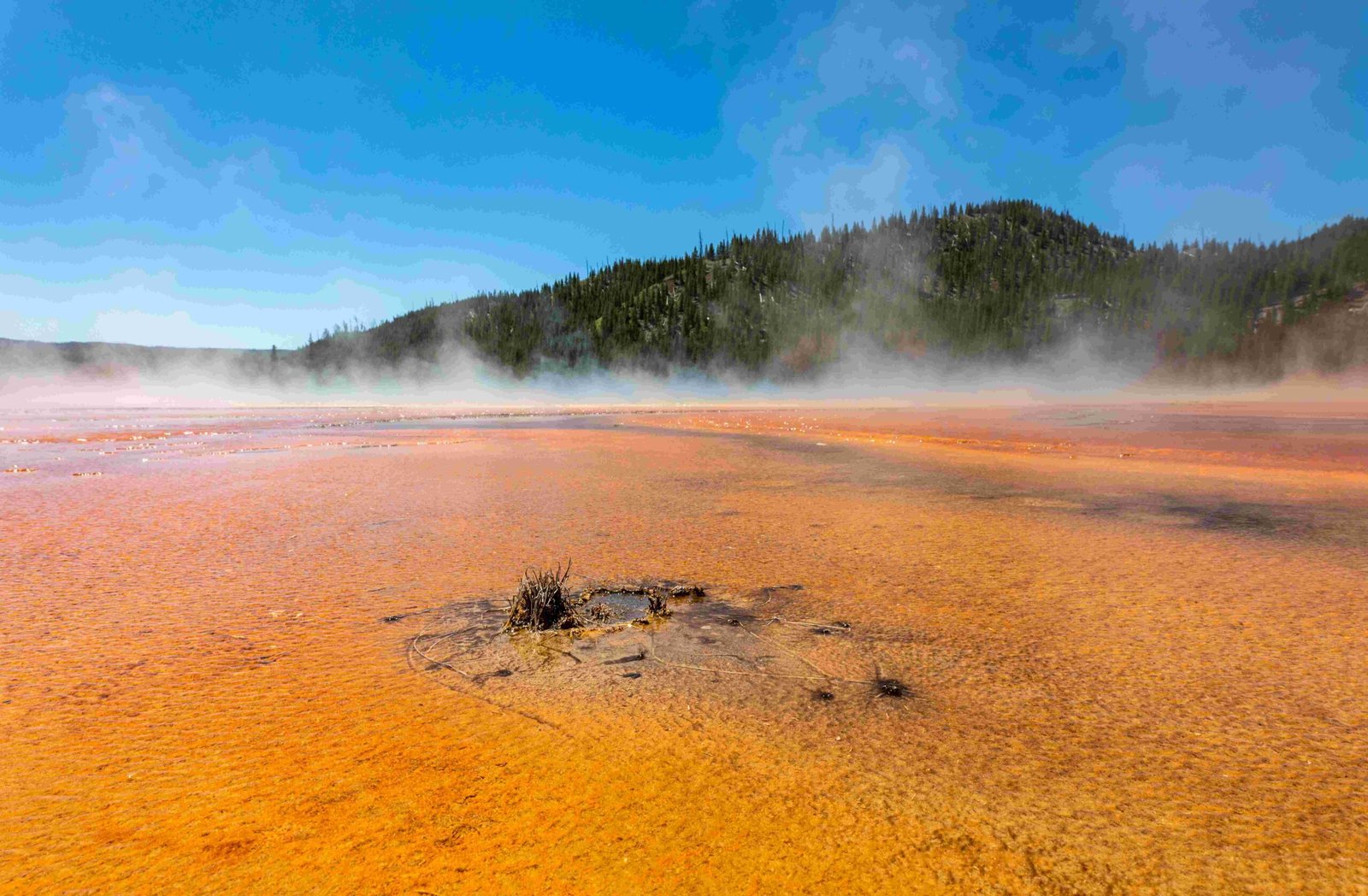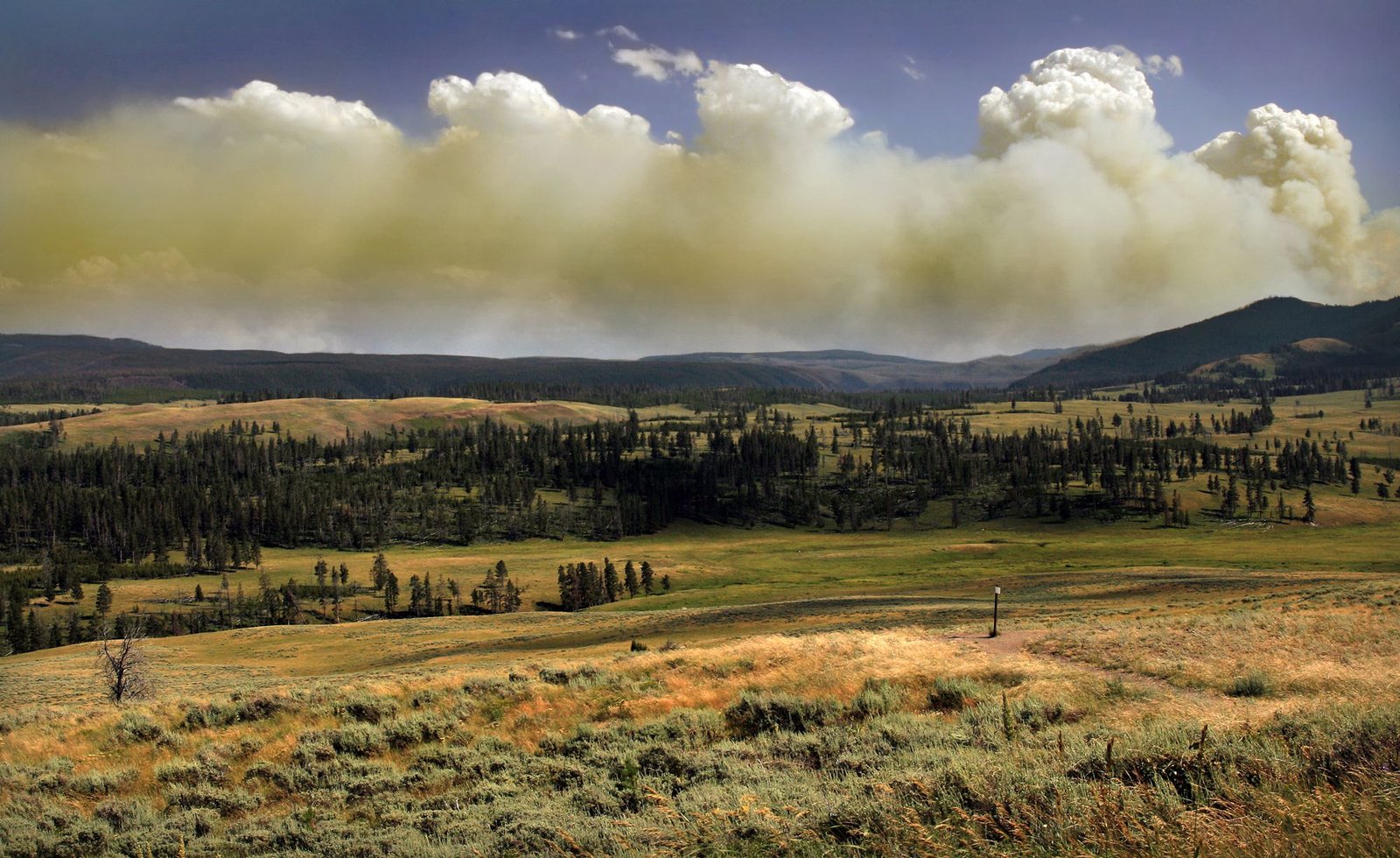Lookout Point in Yellowstone National Park offers breathtaking views of the Lower Falls and the Grand Canyon of the Yellowstone. This easily accessible viewpoint provides visitors with panoramic vistas of the 308-foot-tall waterfall and the colorful canyon walls. Located along the North Rim Drive, Lookout Point is a must-visit destination for those seeking to experience the raw beauty of Yellowstone’s iconic landscapes.
What Makes Lookout Point Special?

Lookout Point stands out as one of the most spectacular viewpoints in Yellowstone National Park. Here’s what makes it unique:
- Unobstructed views of the Lower Falls
- Panoramic vistas of the Grand Canyon of the Yellowstone
- Easy accessibility for visitors of all ages
- Opportunities for stunning photography
The point offers a perfect blend of natural beauty and convenience, making it a popular stop for park visitors.
What Can Visitors See from Lookout Point?

From Lookout Point, visitors are treated to a visual feast that includes:
- Lower Falls: The 308-foot-tall Lower Falls is the centerpiece of the view. The thundering waterfall plunges into the canyon, creating a mesmerizing spectacle.
- Grand Canyon of the Yellowstone: The viewpoint overlooks the 20-mile-long canyon, showcasing its depth of 800 to 1,200 feet.
- Colorful Canyon Walls: The canyon’s walls display a vibrant palette of oranges, yellows, and reds, created by hydrothermal alterations of the rhyolite rock.
- Yellowstone River: Visitors can see the Yellowstone River winding through the canyon floor far below.
When is the Best Time to Visit Lookout Point?
Timing your visit to Lookout Point can greatly enhance your experience. Consider the following factors:
Time of Day
- Early Morning: For fewer crowds and softer light
- Late Afternoon: Ideal for photography due to favorable lighting conditions
Season
- May to October: Best months for clear views and stable weather
- Winter: Offers unique snow-covered landscapes but with limited access
| Season | Pros | Cons |
|---|---|---|
| Summer | Warm weather, all facilities open | Crowded, potential for afternoon thunderstorms |
| Fall | Beautiful foliage, fewer crowds | Cooler temperatures, shorter days |
| Winter | Snow-covered scenery, wildlife viewing | Limited access, cold temperatures |
| Spring | Waterfalls at peak flow, emerging wildlife | Unpredictable weather, some facilities may be closed |
How Accessible is Lookout Point?
Lookout Point is designed to be accessible to a wide range of visitors:
- Parking: A designated parking area is available off North Rim Drive
- Trail: The walkway to the viewpoint is short (0.15 miles round trip) and easy
- Elevation Gain: Minimal, with only 25 feet of elevation change
- Steps: 13 steps lead down to the main viewpoint
- ADA Compliance: The sidewalk from the parking lot to the viewpoint is wheelchair-accessible
What Hiking Trails are Available Near Lookout Point?
While Lookout Point itself is easily accessible, there are several hiking options in the vicinity for those looking to explore further:
- North Rim Trail
- Length: Varies (connects multiple viewpoints)
- Difficulty: Moderate
-
Features: Additional canyon viewpoints like Osprey Point and Grand View Point
-
Red Rock Point Trail
- Length: 0.5 miles round trip
- Difficulty: Strenuous
-
Features: Closer views of Lower Falls, 500-foot descent into the canyon
-
Uncle Tom’s Trail
- Length: 0.7 miles round trip
- Difficulty: Strenuous
- Features: 328 steps leading to a close-up view of Lower Falls
What Photography Tips Can Enhance the Lookout Point Experience?
To capture the best images at Lookout Point:
- Use a wide-angle lens to capture the expansive canyon views
- Bring a tripod for stability, especially in low light conditions
- Consider using neutral density filters for long-exposure shots of the falls
- Visit during the ‘golden hour’ (just after sunrise or before sunset) for optimal lighting
- Experiment with different compositions, including the canyon walls and river
How Does Lookout Point Compare to Other Yellowstone Viewpoints?
While Lookout Point is exceptional, it’s worth comparing it to other viewpoints in the area:
| Viewpoint | Main Feature | Accessibility | Unique Aspect |
|---|---|---|---|
| Lookout Point | Lower Falls and Canyon | Easy | Panoramic views |
| Artist Point | Canyon and Lower Falls | Easy | Iconic artistic perspective |
| Inspiration Point | Deep canyon views | Moderate | Distant waterfall view |
| Grand View | Expansive canyon vista | Easy | Widest canyon view |
Each viewpoint offers a unique perspective on the Grand Canyon of the Yellowstone, making it worthwhile to visit multiple locations if time permits.
What Wildlife Might Be Seen Near Lookout Point?
While focusing on the scenic views, keep an eye out for wildlife:
- Osprey nesting in the canyon walls
- Ravens and Clark’s Nutcrackers soaring above
- Occasional sightings of bighorn sheep on the canyon slopes
- Elk or bison in nearby meadows (especially in early morning or evening)
Remember to maintain a safe distance from all wildlife and never feed animals in the park.
How Can Visitors Make the Most of Their Lookout Point Experience?
To fully appreciate Lookout Point:
- Arrive early to avoid crowds and enjoy the morning light
- Bring binoculars for a closer look at the falls and canyon details
- Take time to observe the changing colors of the canyon walls as the sun moves
- Listen for the roar of the Lower Falls, which can be heard from the viewpoint
- Read the informational plaques to learn about the geology and history of the area
- Consider visiting at different times of day to experience changing light conditions
By following these tips, visitors can ensure a memorable and enriching experience at Lookout Point in Yellowstone National Park.
References:
1. Yellowstone National Park Lodges – Where to See Forever: Most Scenic Spots in Yellowstone
2. Hikespeak.com – Lookout Point | Grand Canyon of the Yellowstone
3. Full Suitcase – Grand Canyon of the Yellowstone: Best Viewpoints, Things to Do

